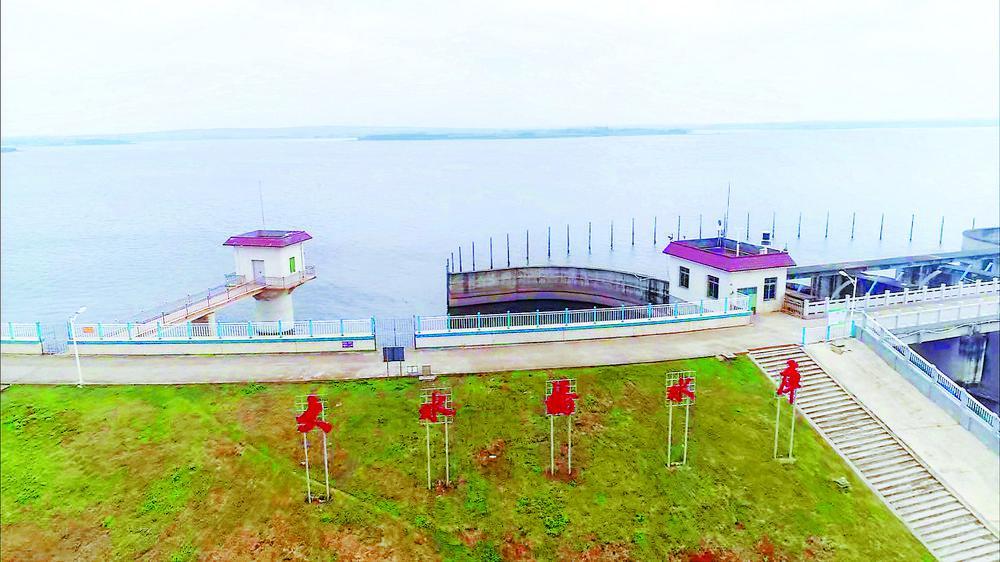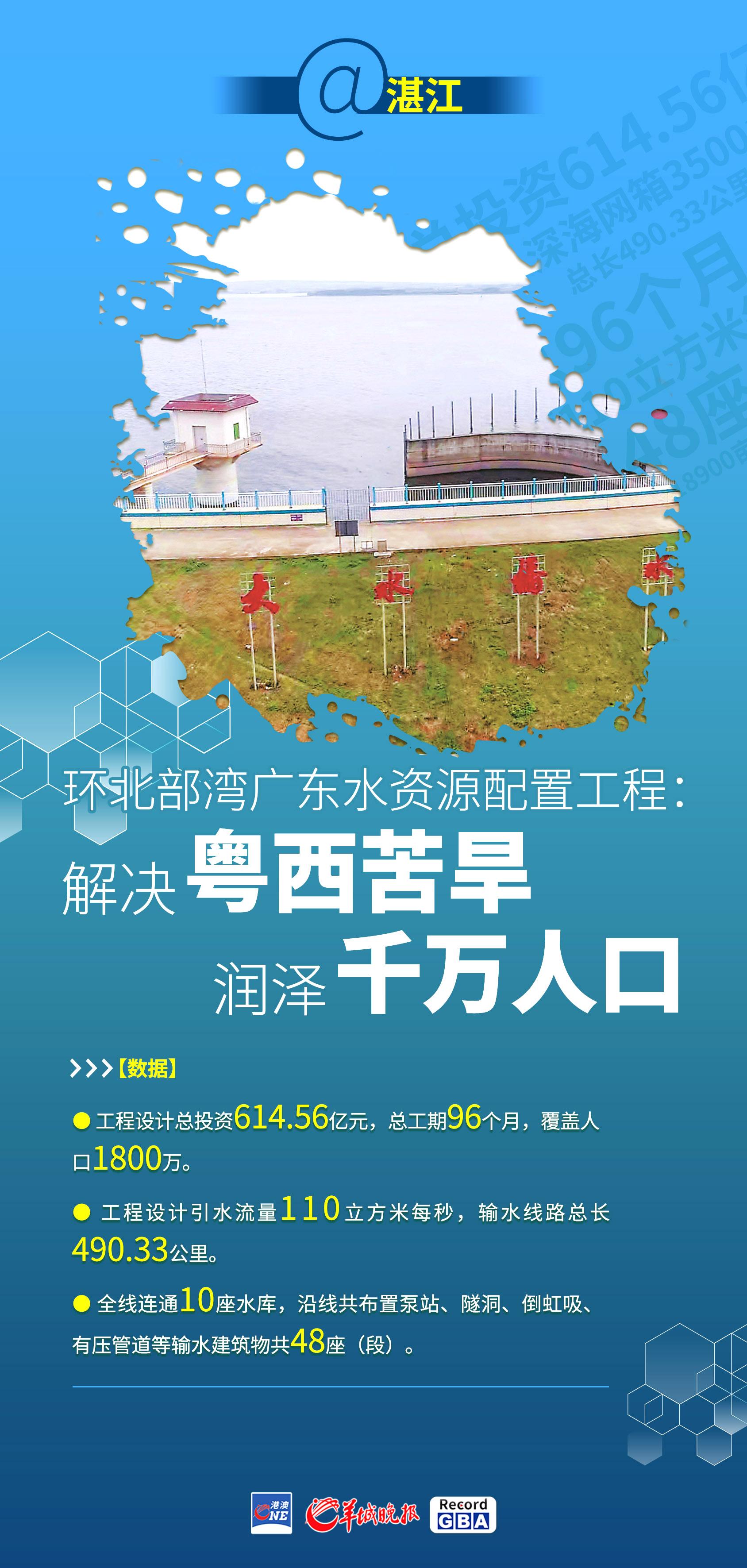Xi Jinping, general secretary of the Communist Party of China Central Committee, on April 10 inspected south China's Guangdong Province.
He first went to the city of Zhanjiang, where he visited a mariculture base, an area of mangrove forests, a port, and a water resource allocation project.
Xi learned about efforts in developing marine aquaculture, strengthening the protection of mangrove forests, boosting transportation infrastructure connectivity, advancing the collaborative development of Guangdong with its neighboring island province of Hainan, and optimizing water resource allocation.
Water is the essence of life and the source of civilization. The Guangdong Beibu Gulf Rim Water Resources Allocation Project is a crucial water project that is implemented by the Guangdong Provincial Government to tackle the severe water shortage in western Guangdong, particularly in the Leizhou Peninsula. This project is a part of China's national water network and is among the 150 major water projects in the country. It has also been given priority for implementation in 2022 as one of the 55 major water projects. The project aims to provide a sustainable and efficient water supply to the people of four cities in western Guangdong, benefiting millions of residents in the area. Through this initiative, the provincial government seeks to address the issue of water scarcity and ensure the region's sustainable development.
Optimizing water resource allocation nationwide
Dashui Bridge Reservoir, formerly known as Dashui Stream, was once known for its rapid and turbulent waters. In order to relieve pressure during the flood season, the local authorities built the reservoir in the east of Xuwen County, completing it in July 1958 with a maximum dam height of 27 meters and a total capacity of 127 million cubic meters. Today, standing on the dam, you can see a beautiful landscape of lush water grass, clear water, and green shores. The reservoir serves as the southern endpoint for the Guangdong Beibu Gulf Water Resources Allocation Project.

The project has a total investment of over 60 billion yuan and spans approximately 500 kilometers. On August 31, 2022, the project officially began construction as one of the "five vertical and five horizontal" water resource allocation backbone networks in Guangdong province. It covers 13 counties and districts and 112 towns and townships in four cities including Yunfu, Maoming, Yangjiang, and Zhanjiang. The project is expected to fundamentally solve water scarcity in western Guangdong, especially in the Leizhou Peninsula, and benefit millions of people in the region.
Addressing water scarcity of Leizhou Peninsula
Many people are confused as to why the coastal area of Leizhou Peninsula, which is surrounded by the sea, suffers from water shortage.
According to Luo Hongxia, the secretary of the Xuwen County CPC Committee, the area has long been known for its drought, which is caused by weak natural water storage capacity and great fluctuations in water availability. Thus, water scarcity has been a persistent issue for residents.
According to incomplete statistics from the water department, since 1949, the Leizhou Peninsula has experienced 56 years of drought, including 25 years of severe drought. The limited water resources have been a hindrance to the economic development of the four cities in western Guangdong. Therefore, the construction of the Guangdong Beibu Gulf Rim Water Resources Allocation Project has become a crucial solution.
Today, the project draws water from the mainstream of West River, pressurizes it through pumping stations, passes through the Yunkai Mountains, and connects to ten water reservoirs to transfer water to the Leizhou Peninsula. The water pipeline spans nearly 500 kilometers and covers the cities of Yunfu, Maoming, Yangjiang, and Zhanjiang, supplying water to a population of over 18 million.

A project faced with world-class challenges
The Beibu Gulf Rim Water Resources Allocation Project, as one of the five main horizontal networks for water resource allocation in Guangdong, is unique compared to other projects.
According to Chen Xiangsheng, an academician of Chinese Academy of Engineering, the Beibu Gulf Rim region is not as developed as other areas, and the local economy, society, and land development are not as advanced. However, the western mountainous region in Guangdong is mainly composed of mountain tunnels, bringing industry-level and even world-class difficulties and challenges to the project. Involving multiple water sources and users, this project covers many different types of water usage, such as providing water to people, preventing floods, irrigating crops, and protecting the environment. To operate the water delivery system efficiently, it is necessary to combine knowledge from multiple disciplines.
Data
The total investment in the project is 61.456 billion yuan, and the total construction period is 96 months. The project will benefit a population of 18 million people.
The project offers a water diversion flow rate of 110 cubic meters per second, and a total water delivery line length of 490.33 kilometers. The entire line connects to ten water reservoirs, with a total of 48 water delivery structures (sections) along the route, including pump stations, tunnels, inverted siphons, and pressurized pipelines.
环北部湾广东水资源配置工程:解决粤西千万人口缺水问题
4月10日,习近平总书记来到广东省湛江市,考察了环北部湾广东水资源配置工程,了解当地优化水资源配置情况。
水是生存之本、文明之源。
作为国家水网骨干工程、国家150项重大水利工程、2022年重点推进的55项重大水利工程之一,环北部湾广东水资源配置工程是广东省委、省政府统筹粤西四市未来发展谋划实施的重大水利工程,将从根本上解决粤西地区特别是雷州半岛的水资源短缺问题,润泽广东千万人口。
立足全国大局优化水资源配置
大水桥原名大水溪,水势湍急无比。为防止汛期给沿岸带来压力,当地截堵大水溪蓄水,在徐闻县城东面建起大水桥水库,1958年7月竣工,最大坝高27米,总库容1.27亿立方米。如今站在大坝上,眼前一片水草丰美、水清岸绿的美好景象。这里作为环北部湾广东水资源配置工程向南输水的终点站。
环北部湾广东水资源配置工程项目总投资超过600亿元、全长约500公里。2022年8月31日,该工程正式开工建设。作为广东省“五纵五横”水资源配置骨干网其中一“横”,该工程覆盖云浮、茂名、阳江、湛江4市13个县城区、112个乡镇,将从根本上解决粤西地区特别是雷州半岛的水资源短缺问题,润泽广东千万人口。
解决雷州半岛苦旱问题
很多人不理解的是,靠着海的雷州半岛为什么会缺水?
徐闻县委书记罗红霞说,其实长期以来,粤西地区特别是雷州半岛是全国闻名的苦旱之地,自然调蓄能力弱,丰枯变化大,水资源短缺问题困扰当地人民。
据水利部门的不完全统计,1949年以来,雷州半岛有56年出现过旱情,其中25年出现大旱,粤西地区水资源承载能力不足,制约着粤西四市的经济发展。因此,环北部湾广东水资源配置工程的建设成为破局关键。
如今,环北部湾广东水资源配置工程从西江干流取水,通过泵站加压提水,穿过云开大山,联通10座水库,调水至雷州半岛,输水线路近500公里,供水范围包括云浮、茂名、阳江、湛江四市,覆盖人口超过1800万人。
工程迎接世界级困难挑战
环北部湾广东水资源配置工程作为广东水资源配置骨干网五横之一,与其他工程相比有哪些不同?
据中国工程院院士陈湘生介绍:环北部湾相对来说尚处于待开发阶段,当地经济社会和土地开发强度相对较低,而粤西山区以山岭隧洞为主,面临行业性乃至世界级困难与挑战。该工程牵涉到多种水源、多种用户,涵盖供水、防洪、灌溉、生态等多种水资源利用目标,输水系统的高效调度运行更需要多学科融合。
数据
工程设计总投资614.56亿元,总工期96个月,覆盖人口1800万。
工程设计引水流量110立方米每秒,输水线路总长490.33公里,全线连通10座水库,沿线共布置泵站、隧洞、倒虹吸、有压管道等输水建筑物共48座(段)。

文丨羊城晚报记者 许悦 丁玲 许张超 王丹阳
图丨羊城晚报记者 周巍
翻译|刘佳慧
海报|蔡红









